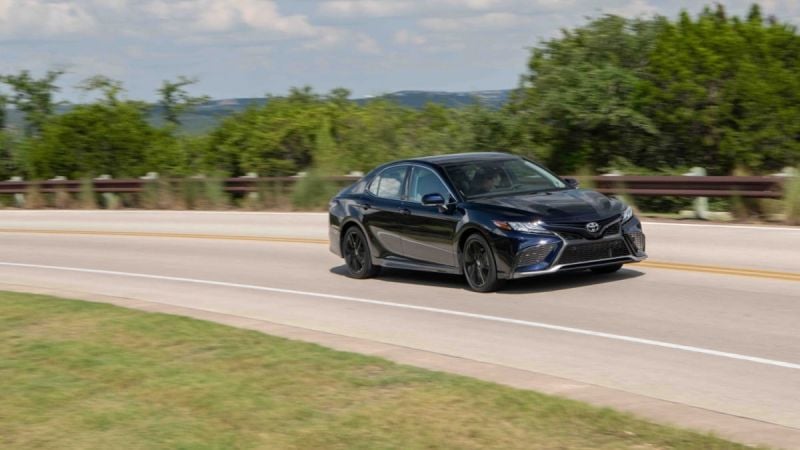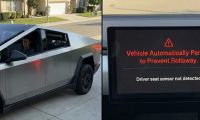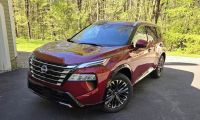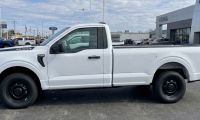I have noticed that among the different brand communities, Toyota owners are the most likely to hyper-mile. This seems to be especially true among the Toyota hybrid models. While browsing the Toyota Nation Forum, I stumbled upon a post by a member who recently upgraded from a 2010 Toyota Prius Hybrid to a 2022 Toyota Camry Hybrid SE. Here's what she says:
“Hi all! We recently upgraded our 2010 Prius to the 2022 Camry SE Hybrid. I'm freaking out though, because it is showing we are only getting 38 mpg. Expected mileage should be 44-47. Any thoughts?”
When asked about details by another member the Camry owner said she is driving “Mostly on the OCAR but small town driving about 20% of time. I drive about 80 on the freeway.”
Looking to get the absolute best fuel economy isn't always an easy task, and the EPA ratings may be a bit misleading when it comes to real-world fuel economy. While there are plenty of reasons to buy a Toyota Camry Hybrid, it still isn't enough for some.
Not many owners talk about it, but when you are coming from a very fuel-efficient vehicle, you suddenly find it isn't as easy to hypermile in the Toyota Camry.
It is important to know that the EPA ratings are estimates. The cars are typically put on a dynometer (dyno) with the driver, simulating different driving scenarios. These include stop-and-go city driving, highway driving with no more than 80 mph, and driving in cold temperatures.
According to FuelEconomy.gov, the 2022 Camry Hybrid SE should be capable of 46 MPG combined (EPA), with 47 on the highway and 40 in the city. Moreover, you should be able to get 686 miles of range before you have to stop for refueling. The Japanese sedan will also cost you $1,050 annually in refueling, based on a 15,000-mile driving, with 45 percent highway and 55 percent city, and 2022 fuel prices taken into consideration.
I have managed to achieve the EPA ratings of all my cars, but the fact of the matter is, you must aim for it, in order to get those numbers. With some vehicles, it's easier to do it, and I've even managed to get better MPG by coasting in neutral and practicing smooth driving.
Fellow members have shared their own experiences with their Camry Hybrids, with some giving better insight than others.

Momma239 says: “My 2022 Camry Hybrid XSE is only getting 34 to 36 mpg city! Climate set at 73, mid fan, and on eco. Trying my best to coast everywhere. Downhill on the highway, I may get the advertised mpg, but not on straightaway. Very disappointed.”
Chaz. Gruver says: “How do you drive your car. Just curious. I had the hybrid le model and during the summer on highway driving, I average 55mpg. The record is 59 mpg. During the winter months, it drops to the upper 40s mpg.”
Vegashybrid says: “Picked my 22 Nightshade SE up today up today drove it about 450 miles home for 41mpg going 80 plus mph and I was enjoying myself a little on the on ramps and a little passing maneuvers to see what the car can do. I have no doubt I can see an EPA rating and above if I tried.”
Leyla says: “After driving it for a few weeks now, MPG is very well tied to how you drive and where. I take a 45-minute trip in one direction that's mostly up hills, and it's getting 40 MPG. On the way back, it's getting 65 MPG, which isn't a surprise. If I use cruise control in the middle lane, I can get maybe 5-8 MPG more than a more "spirited" driving style. Too many factors to promise a single number.”
Being a 2022 model, the engine should have a few miles on the odometer, which means it should be past the break-in period. Sadly, the owner isn't giving much information aside from the fact her Toyota Camry Hybrid is getting 4 to 9 MPG less than what the EPA ratings suggest.
Regardless, here are some general rules you can go by when looking to maximize your car's fuel economy.
1. Check your tire pressure. Each vehicle has a plaque showing the correct tire pressure for each axle. Correct pressure ensures better handling and optimized fuel consumption.
2. Smooth driving. Stabbing on the throttle and then using the brakes to slow your car down is hardly fuel-efficient. If you want to maximize fuel consumption, acceleration should be smooth, which in turn means you don't have to use the brake pedal as much.
3. Cold weather and oncoming wind can affect gas mileage negatively, more than you think. During cold weather, especially in the winter, the air is denser, which increases air resistance. The same goes for oncoming wind. In addition, the average wind speed is faster during winters, leading to more aerodynamic resistance.
4. Cold starts and driving on short distances lead to lower average MPG. During cold starts, the fuel mixture is richer, so the engine can get to operating temperature quicker. This goes double when the weather is cold, as all the fluids need more time to get to optimal temperatures.
5. Cars typically become more fuel-efficient after the engine has been broken in. You may have heard of a break-in period. Each new engine needs to go through a break-in period (typically 500-1,000 miles, but sometimes more) for the piston rings to set into the cylinder wall correctly. While not applicable in the case of this 2022 Camry, this is very important as it ensures the engine will work correctly in the future.
6. Higher speed results in lower MPG. This goes without saying, but dropping the speed means a lighter load on the engine, thus making it consume less fuel. While I personally don't adhere to the rule very often, driving 70 mph instead of 80 makes a significant difference in your MPG.
Regardless of EPA estimates, the Japanese sedan is still one of the top picks in the segment. Here's a mechanic's view of the new Toyota Camry in case you are interested.
I am always curious to learn what MPG people get with their vehicles, regardless of whether they are hybrid or not. If you feel like sharing your experience and insight, feel free to drop a comment below.
Dimitar Angelov's automotive interests made him an expert in a wide variety of vehicles. Japanese brands like Toyota are closest to his heart, although performance cars in general are his favorite segment, which is why he is constantly on the lookout for the best deals on the market. Dimitar Angelov's car passion and knack for the written word led him to complete a Master of Arts in Media and Communications, and classic car restoration. Dim is happy to get behind the wheel of any car and share his impressions. You can follow Dimitar on X, Linked-in, Instagram, and Facebook.
Image source 2022 Toyota Camry press release












Comments
46,000 on 2023 camry le…
Permalink
46,000 on 2023 camry le hybrid, overall 54.6 might. Mostly by driving 5-10 under speed limit and light touch on gas pedal, often slow down uphill and speed up downhill if no ones behind me.
Why does everyone forget…
Permalink
Why does everyone forget about elevation? I have seen someone mention getting lower mpg in cold weather, why would elevation not be factored into a cars economy as well?
I would say elevation is,…
Permalink
In reply to Why does everyone forget… by Bishop (not verified)
I would say elevation is, often, more important than ambient temperature.
Hybrids have regenerative…
Permalink
Hybrids have regenerative braking. So you want to brake, not coast or use the engine to slow down. Braking helps recharge the system allowing for less dependence on the combustion engine resulting in better mpg
If there is a higher setting…
Permalink
In reply to Hybrids have regenerative… by Smithster99 (not verified)
If there is a higher setting for regeneration you don't even need to touch the pedal. All EVs and at many hybrids have it nowadays.
Hybrids should be a 40 on…
Permalink
Hybrids should be a 40 on the highway and 47 in town.